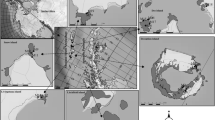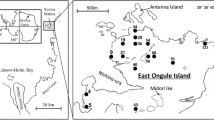Abstract
The purpose of this study was to isolate, identify, and characterize the thermotolerant yeasts for use in high-temperature ethanol fermentation. Thermotolerant yeasts were isolated and screened from soil samples collected from the Mekong Delta, Vietnam, using the enrichment method. Classification and identification of the selected thermotolerant yeasts were performed using matrix-assisted laser desorption ionization/time-of-fight mass spectrometry (MALDI-TOF/MS) and nucleotide sequencing of the D1/D2 domain of the 26S rDNA and the internal transcribed spacer (ITS) 1 and 2 regions. The ethanol production by the selected thermotolerant yeast was carried out using pineapple waste hydrolysate (PWH) as feedstock. A total of 174 yeast isolates were obtained from 80 soil samples collected from 13 provinces in the Mekong Delta, Vietnam. Using MALDI-TOF/MS and nucleotide sequencing of the D1/D2 domain and the ITS 1 and 2 regions, six different yeast species were identified, including Meyerozyma caribbica, Saccharomyces cerevisiae, Candida tropicalis, Torulaspora globosa, Pichia manshurica, and Pichia kudriavzevii. Among the isolated thermotolerant yeasts, P. kudriavzevii CM4.2 displayed great potential for high-temperature ethanol fermentation. The maximum ethanol concentration (36.91 g/L) and volumetric ethanol productivity (4.10 g/L h) produced at 45 °C by P. kudriavzevii CM4.2 were achieved using PWH containing 103.08 g/L of total sugars as a feedstock. These findings clearly demonstrate that the newly isolated thermotolerant yeast P. kudriavzevii CM4.2 has a high potential for second-generation bioethanol production at high temperature.




Similar content being viewed by others
References
Aditiya HB, Chong WT, Mahlia TMI, Sebayang AH, Berawi MA, Nur H (2016) Second generation bioethanol potential from selected Malaysia’s biodiversity biomasses: a review. Waste Manag 47(Pt A):46–61
Arora R, Behera S, Kumar S (2015) Bioprospecting thermophilic/thermotolerant microbes for production of lignocellulosic ethanol: a future perspective. Renew Sust Energ Rev 51:699–717
Birch RM, Walker GM (2000) Influence of magnesium ions on heat shock and ethanol stress responses of Saccharomyces cerevisiae. Enzym Microb Technol 26:678–687
Carrillo-Nieves D, Alanís MJR, de la Cruz Quiroz R, Ruiz HA, Lqbal HMN, Parra-Saldívar R (2019) Current status and future trends of bioethanol production from agro-industrial wastes in Mexico. Renew Sust Energ Rev 102:63–74
Chamnipa N, Thanonkeo S, Klanrit P, Thanonkeo P (2018) The potential of the newly isolated thermotolerant yeast Pichia kudriavzevii RZ8-1 for high-temperature ethanol production. Braz J Microbiol 49:378–391
Charoensopharat K, Thanonkeo P, Thanonkeo S, Yamada M (2015) Ethanol production from Jerusalem artichoke tubers at high temperature by newly isolated thermotolerant inulin-utilizing yeast Kluyveromyces marxianus using consolidated bioprocessing. Anton van Leeuwenhoek 108:173–190
Chen YC, Eisner JD, Kattar MM, Rassoulian-Barrett SL, Lafe K, Bui U, Limaye AP, Cookson BT (2001) Polymorphic internal transcribed spacer region 1 DNA sequences identify medically important yeasts. J Clin Microbiol 39:4042–4051
Choi DH, Park EH, Kim MD (2017) Isolation of thermotolerant yeast Pichia kudriavzevii from nuruk. Food Sci Biotechnol 26:1357–1362
Choonut A, Saejong M, Sangkharak K (2014) The production of ethanol and hydrogen from pineapple peel by Saccharomyces cerevisiae and Enterobacter aerogenes. Energy Procedia 52:242–249
Deesuth O, Laopaiboon P, Jaisil P, Laopaiboon L (2012) Optimization of nitrogen and metal ions supplementation for very high gravity bioethanol fermentation from sweet sorghum juice using an orthogonal array design. Energies 5:3178–3197
Faga BA, Wilkins MR, Banat IM (2010) Ethanol production through simultaneous saccharification and fermentation of switchgrass using Saccharomyces cerevisiae D5A and thermotolerant Kluyveromyces marxianus IMB strains. Bioresour Technol 101:2273–2279
Farrell AE, Plevin RJ, Turner BT, Jones AD, O’Hare M, Kammen DM (2006) Ethanol can contribute to energy and environmental goals. Science 311:506–508
Gombert AK, van Maris AJA (2015) Improving conversion yield of fermentable sugars into fuel ethanol in 1st generation yeast-based production processes. Curr Opin Biotechnol 33:81–86
Hamdouche Y, Guehi T, Durand N, Kedjebo KBD, Montet D, Meile JC (2015) Dynamics of microbial ecology during cocoa fermentation and drying: towards the identification of molecular markers. Food Control 48:117–122
Hellström AM, Almgren A, Carlsson NG, Svanberg U, Andlid TA (2012) Degradation of phytate by Pichia kudriavzevii TY13 and Hanseniaspora guilliermondii TY14 in Tanzanian togwa. Int J Food Microbiol 153:73–77
Izmirlioglu G, Demirci A (2015) Enhanced bio-ethanol production from industrial potato waste by statistical medium optimization. Int J Mol Sci 16:24490–24505
Kaewkrajay C, Dethoup T, Limtong S (2014) Ethanol production from cassava using a newly isolated thermotolerant yeast strain. ScienceAsia 40:268–277
Kaur U, Oberoi HS, Bhargav VK, Sharma-Shivappa R, Dhaliwal SS (2012) Ethanol production from alkali- and ozone-treated cotton stalks using thermotolerant Pichia kudriavzevii HOP-1. Ind Crop Prod 37:219–226
Keo-oudone C, Nitiyon S, Sotitham P, Tani A, Lertwattanasakul N, Yuangsaard N, Bounphanmy S, Limtong S, Yamada M (2016) Isolation and characterization of thermotolerant ethanol-fermenting yeasts from Laos and application of whole-cell matrix-assisted laser desorption/ionization time-of-flight mass spectrometry (MALDI-TOF/MS) analysis for their quick identification. Afr J Biotechnol 15:153–164
Ketnawa S, Chaiwut P, Rawdkuen S (2012) Pineapple wastes: a potential source for bromelain extraction. Food Bioprod Process 90:385–391
Khuri AI, Mukhopadhyay S (2010) Response surface methodology. Wiley Interdiscip Rev Comput Stat 2:128–149
Kurtzman CP, Fell JW, Boekhout T, Robert V (2011) Methods for isolation, phenotypic characterization and maintenance of yeasts. In: Kurtzman CP, Fell JW, Boekhout T (eds) The yeasts, a taxonomic study, 5th edn. Elsevier B.V, San Diego, pp 87–110
Limtong S, Sringiew C, Yongmanitchai W (2007) Production of fuel ethanol at high temperature from sugar cane juice by a newly isolated Kluyveromyces marxianus. Bioresour Technol 98:3367–3374
Lorliam W, Akaracharanya A, Jindamorakot S, Suwannarangsee S, Tanasupawat S (2013) Characterization of xylose-utilizing yeasts isolated from herbivore faeces in Thailand. ScienceAsia 39:26–35
Mecozzi M (2005) Estimation of total carbohydrate amount in environmental samples by the phenol-sulphuric acid method assisted by multivariate calibration. Chemom Intell Lab Syst 79:84–90
Nuanpeng S, Thanonkeo S, Yamada M, Thanonkeo P (2016) Ethanol production from sweet sorghum juice at high temperatures using a newly isolated thermotolerant yeast Saccharomyces cerevisiae DBKKU Y-53. Energies 9:253
O’Donnell K (1993) Fusarium and its near relatives. In: Reynolds DR, Taylor JW (eds) The fungal holomorph: mitotic, meiotic and pleomorphic speciation in fungal systematics. CAB International, Wallingford, pp 225–233
Phong HX, Giang NTC, Nitiyon S, Yamada M, Thanonkeo P, Dung NTP (2016) Ethanol production from molasses at high temperature by thermotolerant yeasts isolated from cocoa. Can Tho Univ J Sci 3:32–37
Rachamontree P, Phusantisampan T, Woravutthikul N, Pornwongthong P, Sriariyanun M (2015) Selection of Pichia kudriavzevii strain for the production of single-cell protein from cassava processing waste. Int J Biol Biomol Agric Food Biotechnol Eng 9:481–485
Radecka D, Mukherjee V, Mateo RQ, Stojiljkovic M, Foulquié-Moreno MR, Thevelein JM (2015) Looking beyond Saccharomyces: the potential of non-conventional yeast species for desirable traits in bioethanol fermentation. FEMS Yeast Res 15:fov053
Rani P, Sharma S, Garg FC, Raj K, Wati L (2010) Ethanol production from potato flour by Saccharomyces cerevisiae. Indian J Sci Technol 3:733–736
Rastogi M, Shrivastava S (2017) Recent advances in second generation bioethanol production: an insight to pretreatment, saccharification and fermentation processes. Renew Sust Energ Rev 80:330–340
Rattanapoltee P, Kaewkannetra P (2014) Utilization of agricultural residues of pineapple peels and sugarcane bagasse as cost-saving raw materials in Scenedesmus acutus for lipid accumulation and biodiesel production. Appl Biochem Biotechnol 173:1495–1510
Robak K, Balcerek M (2018) Review of second generation bioethanol production from residual biomass. Food Technol Biotechnol 56:174–187
Saez JS, Lopes CA, Kirs VE, Sangorrín M (2011) Production of volatile phenols by Pichia manshurica and Pichia membranifaciens isolated from spoiled wines and cellar environment in Patagonia. Food Microbiol 28:503–509
Saini JK, Saini R, Tewari L (2015) Lignocellulosic agriculture wastes as biomass feedstocks for second-generation bioethanol production: concepts and recent developments. 3 Biotech 5:337–353
Sankh S, Thiru M, Saran S, Rangaswamy V (2013) Biodiesel production from a newly isolated Pichia kudriavzevii strain. Fuel 106:690–696
Saucedo-Luna J, Castro-Montoya AJ, Martinez-Pacheco MM, Sosa-Aguirre CR, Campos-Garcia J (2011) Efficient chemical and enzymatic saccharification of the lignocellulosic residue from Agave tequilana bagasse to produce ethanol by Pichia caribbica. J Ind Microbiol Biotechnol 38:725–732
Singhal N, Kumar M, Kanaujia PK, Virdi JS (2015) MALDI-TOF mass spectrometry: an emerging technology for microbial identification and diagnosis. Front Microbiol 6:791
Talukder AA, Easmin F, Mahmud SA, Yamada M (2016) Thermotolerant yeasts capable of producing bioethanol: isolation from nutural fermented sources, identification and characterization. Biotechnol Biotechnol Equip 30:1106–1114
Tamura K, Stecher G, Peterson D, Filipski A, Kumar S (2013) MEGA6: molecular evolutionary genetics analysis version 6.0. Mol Biol Evol 30:2725–2729
Tani A, Sahin N, Fujitani Y, Kato A, Sato K, Kimbara K (2015) Methylobacterium species promoting rice and barley growth and interaction specificity revealed with whole-cell matrix-assisted laser desorption/ionization-time-of-flight mass spectrometry (MALDI-TOF/MS) analysis. PLoS One 10:e0129509
Techaparin A, Thanonkeo P, Klanrit P (2017) High-temperature ethanol production using thermotolerant yeast newly isolated from Greater Mekong Subregion. Braz J Microbiol 48:461–475
Toivari M, Vehkomäki MLL, Nygård Y, Penttilä M, Ruohonen L, Wiebe MG (2013) Low pH D-xylonate production with Pichia kudriavzevii. Bioresour Technol 133:555–562
Tolieng V, Kunthiphun S, Savarajara A, Tanasupawat S (2018) Diversity of yeasts and their ethanol production at high temperature. J Appl Pharm Sci 8:136–142
White TJ, Bruns TD, Lee SB, Taylor JW (1990) Amplification and direct sequencing of fungal ribosomal RNA genes for phylogenetics. In: Innis MA, Gelfand DH, Sninsky JJ, White TJ (eds) PCR protocols: a guide to methods and applications. Academic Press, San Diego, pp 315–322
Yuangsaard N, Yongmanitchai W, Yamada M, Limtong S (2013) Selection and characterization of a newly isolated thermotolerant Pichia kudriavzevii strain for ethanol production at high temperature from cassava starch hydrolysate. Anton van Leeuwenhoek 103:577–588
Zhang Q, Huo N, Wang Y, Zhang Y, Wang R, Hou H (2017) Aroma-enhancing role of Pichia manshurica isolated from Daqu in the brewing of Shanxi Aged vinegar. Int J Food Prop 20:2169–2179
Zoecklien B, Fugelsang K, Gump B, Nury F (1995) Wine analysis and production. Chapman & Hall, New York
Acknowledgments
The authors thank the Faculty of Technology, Khon Kaen University, for providing the Scholarship to Phong HX. A portion of this work was supported by the Graduate School, Khon Kaen University, Ministry of Science and Technology of Vietnam (the project contract no. 09/2014/HĐ-NĐT), Japan Society for the Promotion of Science (JSPS), and the international collaboration research project Core-to-Core Program (CCP). The authors thank Prof. Akio Tani for assistance with the MALDI-TOF/MS analysis.
Funding
This study was funded by the Ministry of Science and Technology of Vietnam (the project contract no. 09/2014/HĐ-NĐT).
Author information
Authors and Affiliations
Corresponding author
Ethics declarations
Conflict of interest
The authors declare that they have no conflict of interest.
Ethical approval
This article does not contain any studies with human participants or animals performed by any of the authors.
Informed consent
Informed consent was obtained from all individual participants included in the study.
Additional information
Publisher’s note
Springer Nature remains neutral with regard to jurisdictional claims in published maps and institutional affiliations.
Electronic supplementary material
ESM 1
(DOCX 1.03 mb)
Rights and permissions
About this article
Cite this article
Phong, H.X., Klanrit, P., Dung, N.T.P. et al. Isolation and characterization of thermotolerant yeasts for the production of second-generation bioethanol. Ann Microbiol 69, 765–776 (2019). https://doi.org/10.1007/s13213-019-01468-5
Received:
Accepted:
Published:
Issue Date:
DOI: https://doi.org/10.1007/s13213-019-01468-5




